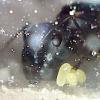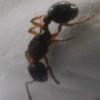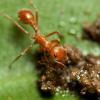How to move your ants
Keep in mind that in the wild for a young colony to move, it is more or less suicide. So they are not going to want to move. You will have to convince them that the new location is way better than the old one, and it will take time to convince them.
Some species are easier to move than others,and some colonies respond to certain methods better than others. The stage of brood can also affect how they move as well - for example, some colonies will migrate to heat in "spring" or "summer"
Ants will take their time in examining the new potential nest site to ensure it is safe enough and more desireable than their old one. They may take days or even weeks to move.
Patience. It is the key for all ant enthusiests.
This is just a list of some ideas, and if they worked well for certain species in my experience. I have some pictures at the very bottom.
Light - some species will move to a shady area if the one they are in is in bright light. Some species don't mind the light and won't move, very common with colonies who are acclimated to light. If using a light bulb, ensure you don't overheat your ants.
Tip: Put a white kleenex or cloth under the old test tube - this will make the old test tube seem "lighter" and encourage them to move to where they blend in more.
Heat - some species will follow moderate heat if their current nest gets cool, especially if they have brood. Other species may leave a higher heat area. If using higher heat, always monitor the nest as some stubborn colonies will not move and will die from high heat. I find Camponotus to follow moderate heat, and several Lasius species to avoid moderate heat.
Moisture - when the old nest/test tube dries out, the colony will search for a more humid location, especially if they have brood. With test tubes, the cotton can look dry but is often damp enough that the ants won't want to move. You will likely have to wait until it is completely dry.
Scents - some scents, such as mammal breath, can make a colony convinced that their location is not secure. This works better going from nest to nest when they do not pass through the outworld. I use a syringe to direct my breath for best results.
Vibration - some species do not like vibration, from a simple light tapping on the side of the nest every 2 min, to something more extreme like putting a stubborn colony on something that vibrates constantly like leaning it against an aquarium air pump or on the top of a dryer - while ensuring that the new nest is receiving no, or way fewer, vibrations.
On a side note, I found a youtube video of a woodpecker hammering into wood and my Camponotus flipped when I put the device producing the sound on the edge of the formicarium.
Manually moving the ants - using featherweight forceps that allow you to move ants and brood without injuring them. For small colonies it is possible to use featherweight forceps to move the ants and brood one by one.
Admittedly, I often turn the old test tube upside down and tap it to cause most of the workers to fall into the foraging area where they can wander into the new nest or test tube on their own power.
Test Tube Tricks:
With test tubes, one trick I find handy for smaller colonies is to use tweezers to bring the cotton blocking the water closer to the entrance of the test tube. Their scent near the entrance is not as strong, and they will be more willing to re-locate.
Another trick for test tubes - when the colony has no brood - is to attach the new test tube/nest to a small foraging area and slowly fill the old test tube with sand (a few grains at a time), letting all of them rise above the sand - once they are out of the tube, they will fall into the foraging area and find shelter - the new test tube.
Some species have no issues climbing glass, so you may want to wear plastic gloves in case they manage to get on your hands instead of falling into the foraging area. Also hold the test tube above the foraging area so that any that drop will land in there. Often, it only takes a pea sized amount of sand to send them into a panic - put the test tube in the middle of the foraging area and many may leave on their own power. I like to put the test tube on an object that elevates - in a new location they find it difficult or impossible to find their way back for the first while, which allows you to pick the test tube up again.
If they are good climbers, you can prop the test tube up in a corner.
Tips and Tricks:
Always have something on hand to grab or contain an escaping ant.
Always have a backup plan if they decide to make a break for freedom.
Once you connect the test tubes/nests, watch for a bit. Sometimes there is gap or escape route that you were not aware of. For me, the tape holding the 2 test tubes sometimes lets go if the heating cable is close enough to heat it up a bit.
Don't forget to put an escape barrier on the foraging area to prevent them from climbing out once you get them in. ![]()
When I am messing around with colonies and expect possible escapees I use a rubbermaid bin that I rubbed calcium powder into the sides (I just crushed up Caltrate calcium pills, flour may also work). I find ants are unable to climb the powdered sides, so they stay put until I have time to collect them with featherweight forceps and return them to the foraging area or test tube. I use the same powdered bin to keep flightless fruit flies from escaping. Video on how to powder a bin: www.youtube.com/watch?v=WYwivySo6jk
If you are worried about getting bit or stung, consider wearing plastic gloves with the edges of your sweater tucked into them so they can't get up your sleeves. Beyond that, you may need a hazmat suit. ![]()
Pictures:
Light Method (You can't see the LED flashlight beam in this photo).
The new test tube and nest are covered. The old test tube has a white scrap of towel under to make it seem lighter, encouraging them to move.
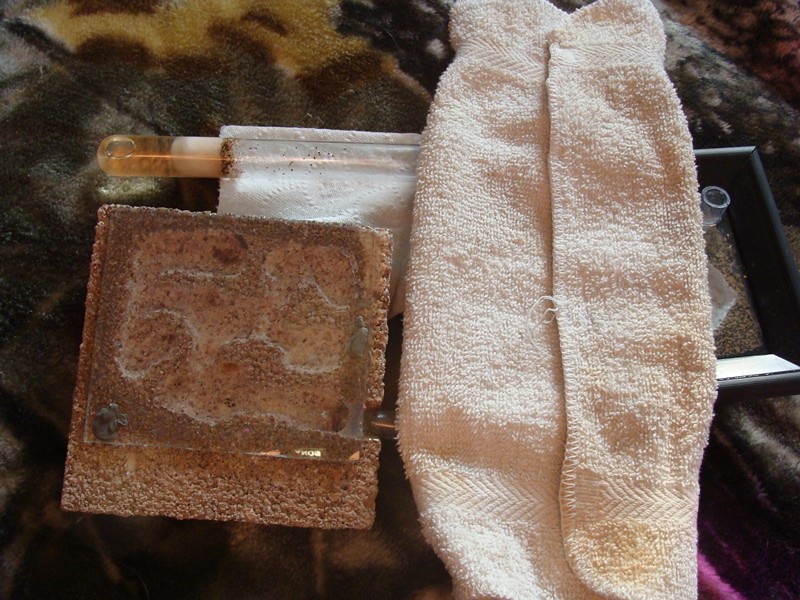
Heat method. Camponotus tend to follow heat, especially if they have brood, notice the brood is close to the heat cable.

Manually moving ants with featherweight forceps:

Pulling the cotton holding back the water closer to entrance using tweezers:

Convincing ants to move with sand (only use when no brood is present).
Notice the dusted escapee bin below and the gloves being used as safety measures.
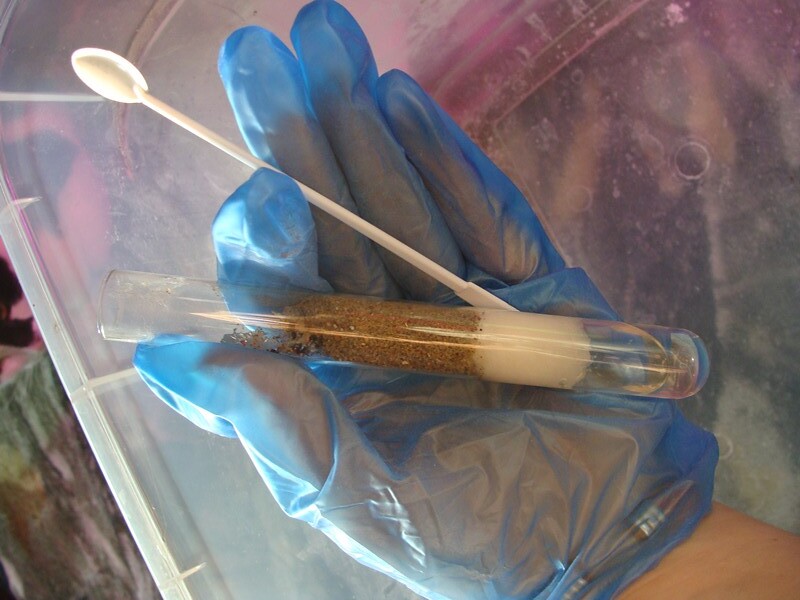
Outworld connected to test tube/nest. You can put the old test tube in the outworld, the ants will move into the test tube or nest. I often do this to allow test tube colonies to forage easily.
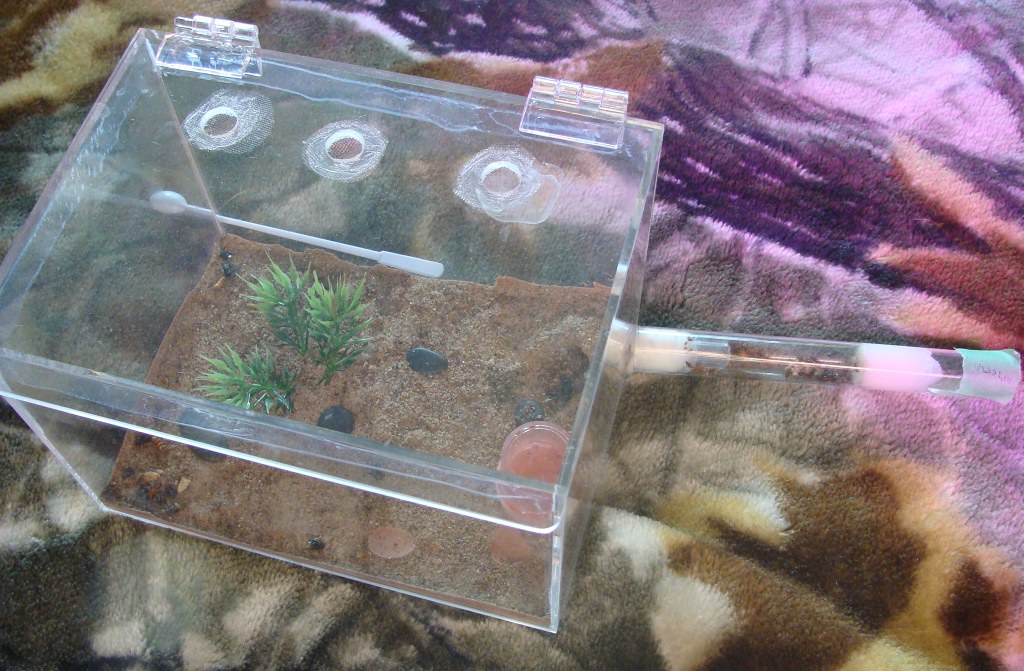
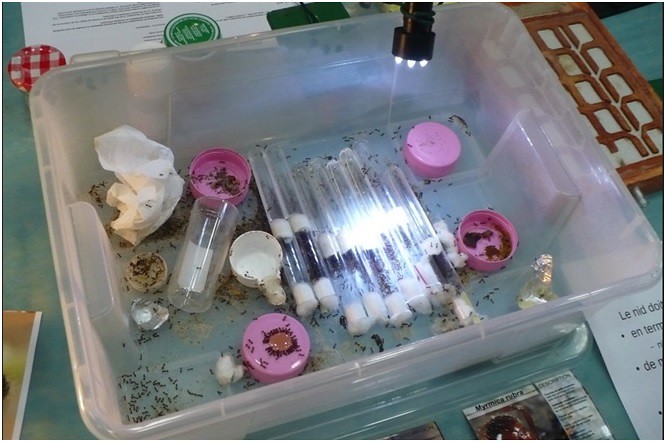
Edited by Crystals, December 28 2017 - 3:37 PM.




